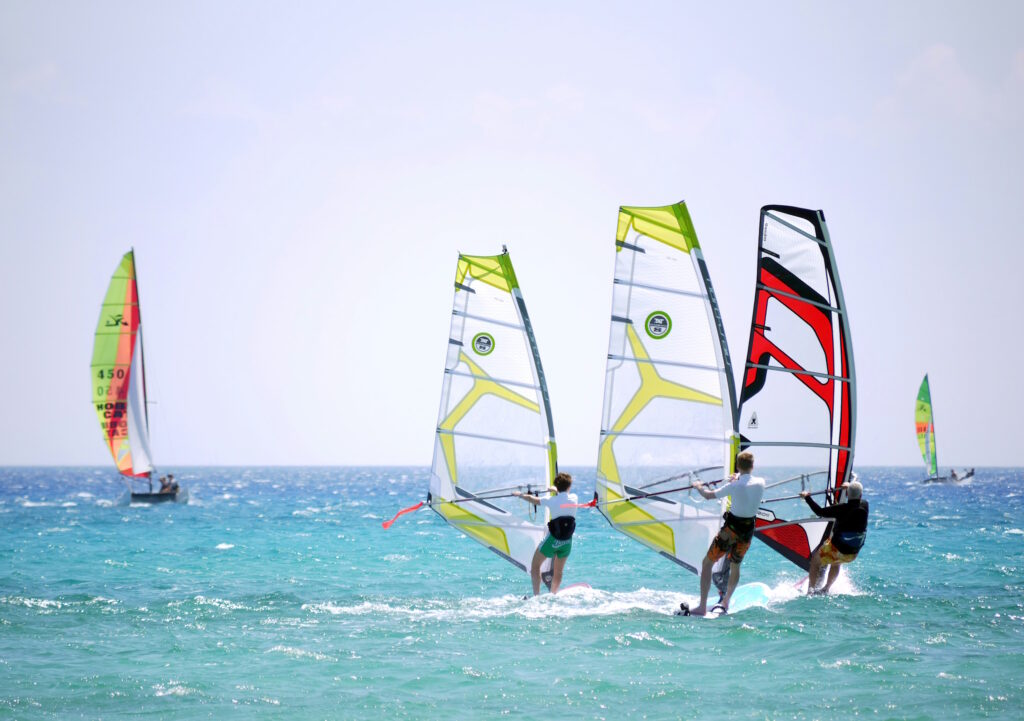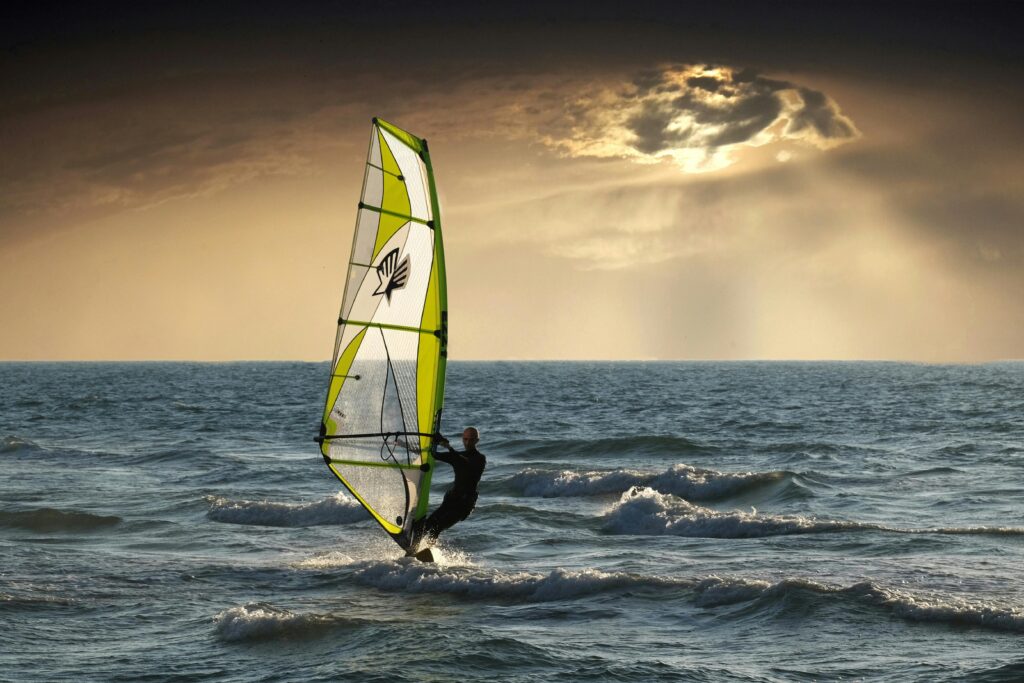Imagine soaring above the lush landscapes of Bali, where the ocean meets the sky and the horizon stretches endlessly. That’s the thrill of paragliding in this island paradise. It’s not just an adventure; it’s an unforgettable way to experience Bali’s breathtaking beauty from a bird’s-eye view.
As someone who’s always on the lookout for unique travel experiences, I found paragliding in Bali to be one of the most exhilarating activities. Whether you’re a seasoned paraglider or a curious newbie, the island’s professional guides and ideal wind conditions make it a top destination for this thrilling sport. Join me as I dive into what makes paragliding in Bali a must-try for any adventure seeker.
Key Takeaways
- Ideal paragliding conditions: Bali’s landscape offers numerous, reliable take-off points and optimal air currents, making it a preferred destination for paragliders. The best months for stable and enjoyable flight conditions are from April to October, with April and May being particularly ideal.
- Safety Measures: paragliding in Bali adheres to strict safety standards. Beginners and experienced flyers alike are provided with rigorous safety briefings, top-quality gear, and informed guidance from professional instructors, ensuring a secure flying experience.
- Diverse locations for all skill levels: Bali features a variety of paragliding spots, such as Timbis Beach and Gunung Payung, catering to both beginners who need gentler winds and experts looking for challenging flights.
- Cultural enrichment: engaging in paragliding in Bali also offers an immersion into the local culture, enhancing the overall experience with the friendliness of the Balinese people and the island’s culinary delights post-flight.
- Comprehensive learning and rental options: several reputable shops and schools in Bali offer not only equipment rentals but also beginner courses and detailed instructional sessions, enhancing the accessibility and enjoyment of paragliding for newcomers.
Overview
Paragliding in Bali offers an unrivaled opportunity to experience the island’s majestic beauty from above. The activity combines the thrill of flight with spectacular panoramas of the ocean, terraced rice paddies, and lush tropical landscapes. I find the diversity of launch sites particularly appealing, catering to various skill levels and preferences.
Bali’s unique geographical features contribute significantly to its popularity among paragliding enthusiasts. The island’s coastal cliffs provide natural take-off points that are complemented by the thermals rising from the warm surfaces below, creating ideal conditions for paragliding for most of the year. Key locations like Timbis Beach near Nusa Dua and the cliffs around Uluwatu offer not only great launching spots but also some of the best scenic views arguably found anywhere in the world.
Safety is a top priority in these activities, and Bali’s paragliding schools and operators adhere to strict safety protocols. They equip flyers with top-notch gear and provide comprehensive pre-flight briefings. Most schools offer courses for beginners, which include basic handling techniques, understanding air currents, and proper landing methods. I am impressed with the level of professionalism and the emphasis on safety, which reassures anyone trying this sport for the first time.
Another factor that enhances the paragliding experience in Bali is the local culture. The warmth and friendliness of the Balinese people add a layer of comfort and enjoyment to the adventure. Post-flight, the local culinary offerings and the serene beach environments provide a perfect end to an exhilarating day.
Exploring Bali from the sky is a transformative experience. Each flight is a unique journey, with dynamic weather patterns and varied landscapes painting a picture that stays with you long after you’ve landed. Whether you’re a seasoned flyer or a curious newbie, paragliding in Bali doesn’t just offer a bird’s-eye view of paradise, it embeds the very essence of adventure into your soul.
Best locations for paragliding
Paragliding in Bali showcases some of the most stunning aerial views imaginable. From majestic beaches to rolling hills, there are locations that cater to all levels of experience, especially beginners who are just getting their wings.
Timbis Beach (Bukit Peninsula): located on the southern coast of Bali, Timbis Beach is one of the most popular spots for beginner paragliders, as it’s considered the safest. The takeoff area, situated atop a cliff, provides an easy and safe launch (coastal ridge soaring), leading to a flight over beautiful coastal views, with a ridge stretching up to 10 kilometers. With professional instructors available, first-timers find it a reassuring place to start their paragliding journey, while more advanced paragliders can just enjoy an easy ride with beautiful views.
Gunung Payung: another excellent location for novice paragliders is Gunung Payung, positioned near Nusa Dua. This site is close to Timbis beach, but offers a less crowded atmosphere, with equally stunning views of the ocean. The wind conditions here are reliably gentle, making takeoffs and landings more manageable for beginners.
Melasti Beach (Ungasan area): Southern cliffs of Uluwatu, which allow for ridge soaring, sometimes thermic. The steep cliffs provide stunning views over the ocean and temples. It’s a great site for intermediate and scenic flyers; however, depending on wind conditions, the flight can be short.
Mount Batur (Kintamani): this is a volcanic mountain, which allows for thermal flying. It’s a pretty unusual and incredible scenery with views over the crater, caldera lake, black lava fields… There are no tandem flights available, and this site is only suitable for experienced flyers with thermaling skills and under specific weather conditions.
Best time of year for paragliding in Bali
Discovering the optimal season for paragliding in Bali ensures an exceptional experience. The island’s climate plays a crucial role in determining when it’s best to take to the skies.
Paragliding Conditions and Seasons
In Bali, the dry season, spanning from April to October, presents the most favorable conditions for paragliding. During these months, the winds are generally more stable, providing smoother and safer flights. The northeast trade winds, prevalent during this period, create ideal thermal conditions that are essential for longer and more enjoyable flights.
Optimal Months for Paragliding
April and May stand out as the prime months for paragliding in Bali. These months mark the transition from the wet to the dry season, where the rainfall is minimal, and the winds start to pick up. The skies during these months are notably clear, offering breathtaking views of the island’s landscapes. In contrast, July and August might see slightly stronger winds, which can be perfect for more experienced gliders seeking challenging flights.
The island’s consistent weather patterns during these months ensure that disruptions due to sudden weather changes are rare, making it more reliable for planning paragliding trips. Additionally, lower humidity levels during the dry season contribute to a more comfortable flying experience.
Safety tips for paragliding in Bali
To ensure that every flight remains as safe as it is thrilling, I’m sharing some essential tips that focus on understanding local regulations and staying safe while over water.
Understanding local regulations
Paragliding in Bali involves strict adherence to local regulations, which are designed to ensure the safety of both the individual and the public. Familiarising oneself with these rules is a crucial step before taking to the skies. Here’s what you need to know:
- Licensing requirements: In Bali, all paragliders must hold a valid license issued by an accredited paragliding institution. If you’re a beginner, ensure that your training school provides you with a temporary license post-training.
- Flight zones: Be aware of designated flight zones. Bali strictly regulates where you can launch and land. Common approved areas include Timbis Beach and Gunung Payung.
- Weather restrictions: Pay attention to weather advisories. Paragliding operations are weather dependent, and there are strict guidelines about flying conditions, including wind speeds and weather clarity, to prevent accidents.
Staying Safe On The Water
Many paragliding sites in Bali are near or over water bodies, which adds a layer of risk. Here are some tips to stay safe when paragliding over water:
- Wear a life vest: regardless of your swimming skills, wearing a life vest while paragliding over water is mandatory. It’s a simple measure that massively boosts your safety in case of an unexpected water landing.
- Learn water landing techniques: familiarize yourself with water landing procedures. Although rare, understanding how to safely manage a water landing can reduce panic and increase your chances of staying safe.
- Emergency preparedness: always fly with a rescue whistle and a waterproof pouch with essential items like a small flashlight, a signaling mirror, and a personal locator beacon.
Conclusion
Paragliding in Bali isn’t just another activity; it’s a chance to capture the essence of freedom and beauty that the island offers from a unique vantage point. The combination of professional guidance, optimal weather, and diverse locations makes Bali a top destination for both beginners and experienced paragliders. Whether you’re launching from Timbis Beach or soaring over the cliffs of Uluwatu, the experience is bound to leave you with unforgettable memories and a deep appreciation for this incredible sport. If you’re planning your next adventure remember to embrace the thrill safely with the right preparation and respect for the local guidelines. Bali awaits to give you a view like no other.
And if you continue your paragliding adventures in other South Asian countries, check out our guides to paragliding in Thailand, in Vietnam and in Cambodia.


